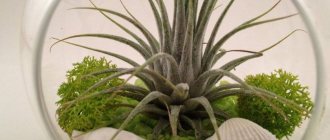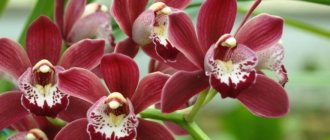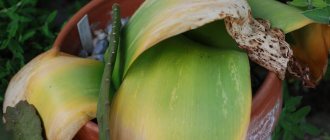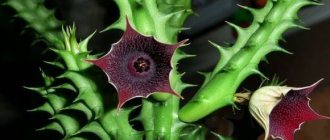The genus Euphorbia belongs to the amazing family of Euphorbiaceae, which are distinguished by their species diversity. At the same time, milkweeds include well-known and popular indoor and garden plants. Many indoor plant lovers grow them as cacti, although they are classified as milkweeds. Let's tell you more about euphorbia (euphorbia), its most common types and how to care for it at home.
Description of the plant
Europhobia is a popular plant in all countries, but it is known as milkweed. It also grows in cold countries, but the greatest variety is found in the tropics.
The homeland of milkweed is about. Madagascar, South America and Africa. Many species can be trees, shrubs or flowers that we began to grow on windowsills. Others moved into the gardens.
Important! Succulents are plants that have adapted to dry climates by storing water in their leaves or stems. In addition to euphorbia, succulents include: Kalanchoe, agave, aloe, echeveria, crassula, etc.
All representatives of milkweed: from a small flower to a tree are saturated with poisonous “milk”.
Types of milkweed
Euphorbias are grown indoors or in the garden as annual or perennial plants. Euphorbias, suitable for cultivation in open ground, tolerate frost, drought, are resistant to diseases and are rarely affected by pests. In places of natural growth, milkweeds grow to large sizes, appearing as trees or subshrubs.
Euphorbias grown by gardeners can be divided into garden and indoor ones. Among the euphorbias growing in open ground, we list the most popular ones.
- Cypress. This plant is used in garden design. A composition of several plants looks compact. The erect stem is covered with narrow leaves. The top is crowned with small yellow flowers collected in a group. Easily tolerates summer drought and frosty winters. Often considered a weed.
- Variegated spurge. The plant got its name from its red upper leaves. And by autumn the bracts acquire a carmine hue. Euphorbia reaches almost a meter in height.
- Marginated spurge (marginata). In many people's dachas and private homes, an annual unpretentious plant grows in the yard, which is popularly called “bride”, “rich bride” for the white border on the leaves. But few people know that this plant is from the genus Euphorbia. The white border is formed during flowering. The flowers of bordered milkweed are small, white, located on the tops of the shoots. It can grow either singly or as a small bush.
- Multicolored spurge. It is grown in gardens as a shrub. From spring until frost, it pleases not only with the compact round shape of the bush, but also with abundant flowering. The bush is literally strewn with beautiful yellow flowers. The plant is a perennial and tolerates frosty winters and dry summers.
This may be interesting: Zamioculcas - caring for a Dollar Tree at home
Cypress
Variegated
Bordered
Multicolor
The second group of euphorbias are indoor milkweeds. Among them you can find plants with and without leaves. Many milkweeds look like cacti. We advise cactus lovers to pay attention to the following types of euphorbia:
- Thorn. In nature it grows up to one meter high. When grown in an apartment it is smaller in size. The ribbed stem resembles an echinocactus, but differs from it in the number of ribs, size and number of spines.
- Bristle spurge. It has a straight stem with protruding ribs covered with sparse spines. Under natural conditions it grows in the form of a tall bush.
- Fatty (obese) spurge. Its shape is similar to a cactus. But, unlike it, it has no thorns. The ribs of milkweed are wide and slightly protruding. As it grows, the stem changes from spherical to cylindrical. Typically indoors it reaches up to 12–15 centimeters in height and 10 centimeters in diameter.
- Melon spurge. It is very similar to obese euphorbia, but has the shape of a ball measuring about ten centimeters. The slightly protruding ribs are covered with small growths that look like dry twigs. This type of milkweed is rarely found in apartment conditions.
Thorn
bristling
Fatty
Melon-shaped
Now let's talk about milkweeds with leaves. Among them, the first place is occupied by the Beautiful Euphorbia or the familiar Poinsettia . Its second name is Christmas flower. You can read about how to care for Poinsettia in a separate article on our website. Its flowering coincides with Catholic Christmas. In fact, this species of milkweed has very small flowers. And the flower is decorated with red, pink or white upper leaves. The shape of a group of red leaves resembles a Christmas star. Unfortunately, poinsettia does not tolerate dry air in apartments well, and often dries out after flowering indoors. Therefore, many people give it as a gift for the New Year holidays, and throw it away after flowering.
Poinsettia
We will give second place to Akalifa or foxtail. It is grown as an ampelous plant. Hanging shoots, with semi-oval jagged leaves, are decorated with bright red flowers at the ends. The flowers are panicles resembling a fox's tail.
Akalifa
Another hanging plant of the Euphorbiaceae genus is called “Diamond Frost”. It is decorated with many white small flowers, through which light green elongated leaves are visible.
Diamond frost
One of the beautiful milkweeds is called Mil's milkweed or "crown of thorns". It is distinguished by its unpretentiousness and beautiful flowers. In fact, it is not the small flowers that give the plant its beauty, but the bright red or yellow bracts. The spiky gray shoots at the top end in dark green oblong leaves, rounded towards the edge. Over time, Euphorbia Mila loses its decorative value, because shoots without leaves make up the main part of the bush.
mile
Ribbed milkweed also only has leaves at the top. Long leaves, with white transverse veins, become wider towards the edge. It has one ribbed stem, which gives the plant a palm-like appearance. It can grow up to a meter in height. Ribbed spurge blooms with pink or white flowers.
Ribbed
White headed spurge is very similar to ribbed spurge, but has a few differences. Its trunk is smooth, not ribbed. White vein blooms with small flowers. The leaves have a more rounded shape with distinct white veins.
Belozhilkovy
Euphorbia trigonae or Euphorbia triangularis has unusual stems. Bright green triangular shaped shoots grow up to half a meter. They extend from the main trunk and stretch upward. Small leaves grow on the edges of the edges. Thin long stems often break.
Trigona
Euphorbia tirucalli. Used in the interior of apartments and offices, it attracts attention with its unusual appearance. Its thin branching branches have neither leaves nor thorns. Indoors it reaches a height of up to three to four meters. The flowers are small and yellow.
Tirukalli
Euphorbia is the head of a jellyfish. This type of euphorbia is often found on the windows of succulent lovers. The name reflects its appearance well. Flexible shoots extend from the short stem, sticking out in all directions. They are covered with small tubercles with tiny leaves. The flowers are small, yellow-green in color.
Jellyfish head
Large-horned milkweed attracts attention with its unusual shape. The triangular stems are divided into distinct segments, and the edges are studded with gray or brown spines. The shoots branch, forming a bush. Small leaves appear at the ends of young shoots, which soon fall off. Large-horned spurge is popular among lovers of original plants.
Large-horned
Of course, it is impossible to cover all the milkweeds grown indoors. We introduced you only to the most popular types.
This may be interesting: Pedilanthus - features of care at home
Flower care at home
Many start them at home, but caution must be exercised, because the poisonous “milk” can cause poisoning. Gloves are required when transplanting.
Indoors, eurphobia grows up to 3 m, and unpretentiousness is a godsend for an inexperienced gardener.
Reproduction
Reproduction is carried out by seeds and young shoots. The optimal time is spring or summer. Basically, gardeners prefer to propagate using cuttings rather than growing from seeds. To do this, cut a stalk about 10-13 cm long and place it in warm water, as this helps the poisonous juice flow out. It is strongly recommended to treat the cuts with crushed coal so as not to harm the plant. The duration of the procedure is from 2 to 4 days. After this, you need to prepare a pot for growing the sprout. For this purpose, take a wide pot and pour sand into it, previously moistened with water. After this, the shoot is transferred there and placed in a bright place.
After the sprouts have taken root, they need to be transplanted into permanent pots. At first the pot should be small, but every year during replanting it is changed, choosing a container 4-5 cm larger than the previous one. Some types of succulents grow slowly, in this case it is advisable to choose a pot larger than the previous one by only 2-3 cm.
In the first months, the flower is not disturbed; a favorable environment is created for it. The temperature should be around 20°C. Euphorbia can go without water for a long time.
Humidity and watering
In March-April, the euphorbia plant actively grows. Watering is required once a week, but the soil should not be allowed to dry out. In winter, reduce watering.
Reference! Euphorbia will easily tolerate a lack of moisture, but excess water can ruin the roots of the plant. Doesn't like spraying!
general information
The species diversity is amazing - there are about 2 thousand species of euphorbia! Therefore, choosing your favorite flower will not be difficult: some of them are less common, while others are very common.
It is important! The plant received the name euphorbia because its milky sap, filling the leaves and trunk, contains euphorin, a highly toxic substance. Because of this, the liquid is very toxic - if it gets on the skin, it causes severe burns. When taken internally, it causes serious intoxication, and if it gets on the mucous membrane of the eye, it threatens complete blindness.
All milkweeds are succulent plants, that is, they have the ability to retain moisture in the foliage and use it sparingly during droughts. It can be a shrub or tree, and there are also herbaceous vegetation, both annual and perennial.
Externally, all milkweeds are very different and it is not always possible to understand that they are representatives of the same species. There are deciduous varieties, succulents that have no leaves at all, and euphorbias that resemble cacti or stems covered with spines.
The height of euphorbias varies, some have very modest dimensions, while there are also real giants.
This is interesting! Canary spurge in its natural environment grows up to 10–12 meters!
Today, these amazing, exotic and poisonous plants can be found in almost every corner of the earth, if not in nature, then at home. As a rule, they do well in temperate latitudes. Euphorbias are native to the African subtropics; many varieties grow in Madagascar, desert, arid regions of Mexico and East Africa.
In Russia alone you can find over a hundred species of euphorbia. Some of them are endemic, for example, Euphorbia awnosa, which grows in the Stavropol Territory and is listed in the Red Book.
The most suitable climatic conditions for their growth in nature are in Altai and the Caucasus. And also, euphorbia exists in Asian countries, for example, in China.
A little history. Euphorbia is poisonous, but at the same time has unique healing properties. People have known about this since ancient times. Thus, the scientist from Ancient Rome Dioscorides, who is considered the father of botany and pharmacognosy, systematized culture. He gave the name to the plant in honor of the doctor Euphorbus, who confirmed the beneficial medicinal qualities of milkweed.
People associated many signs and legends with such unusual plants. So, according to the art of Feng Shui, it is possible to keep succulents and cacti that have thorns at home, but with some reservations: they are not the best decoration for a nursery or bedroom, however, they will be excellent amulets in the hallway, protecting the home from bad energy.
Euphorbia schoolleaf











